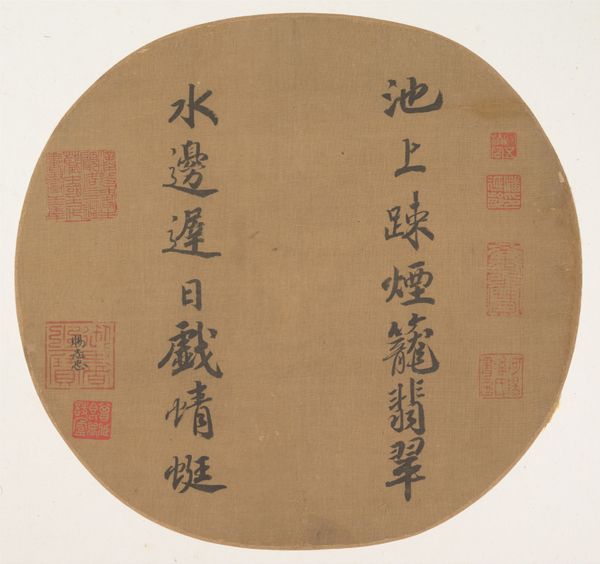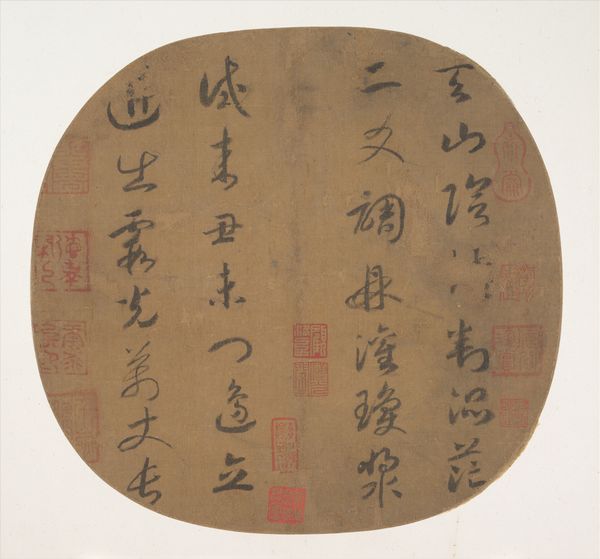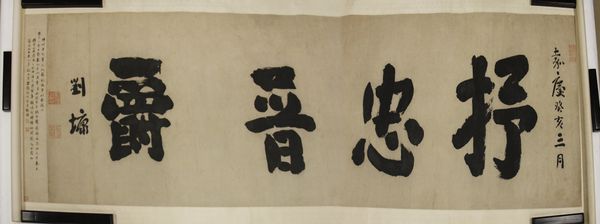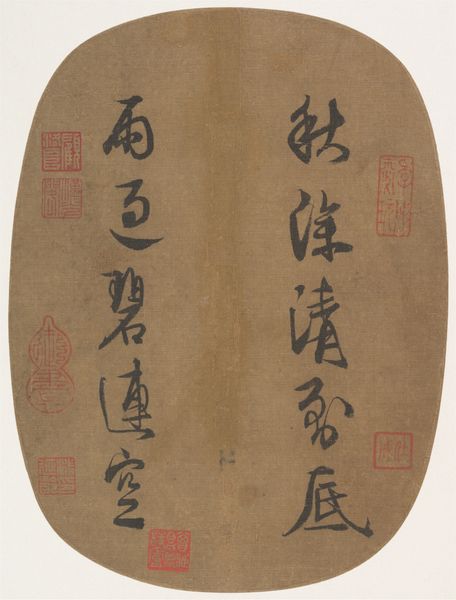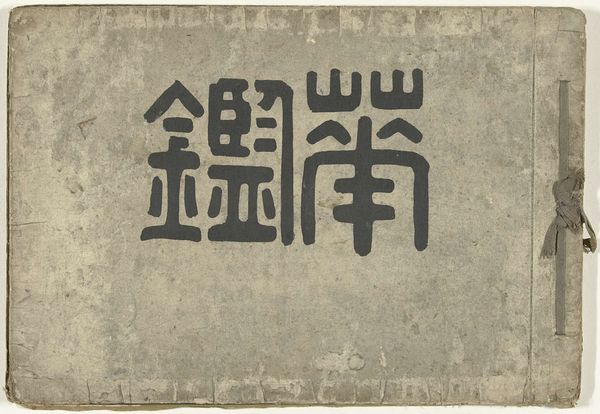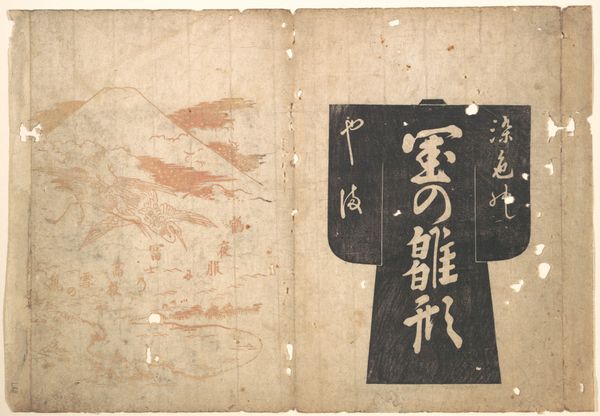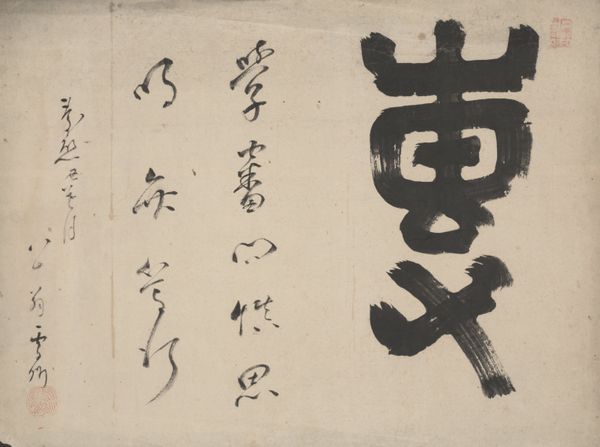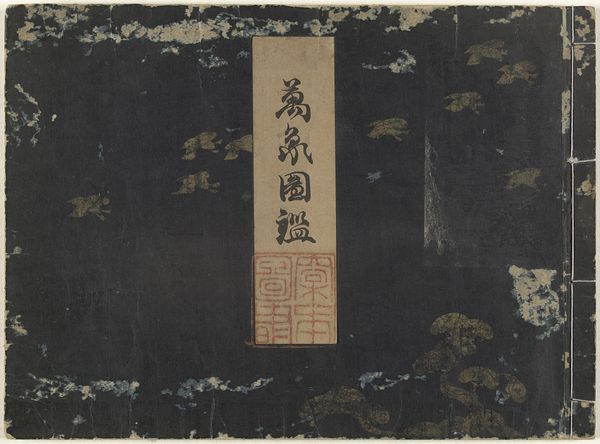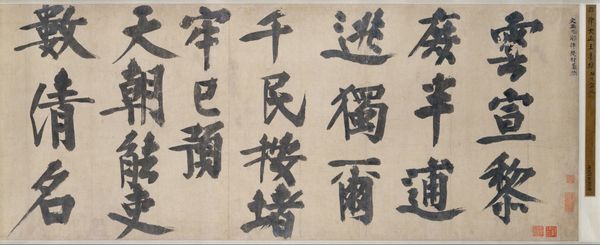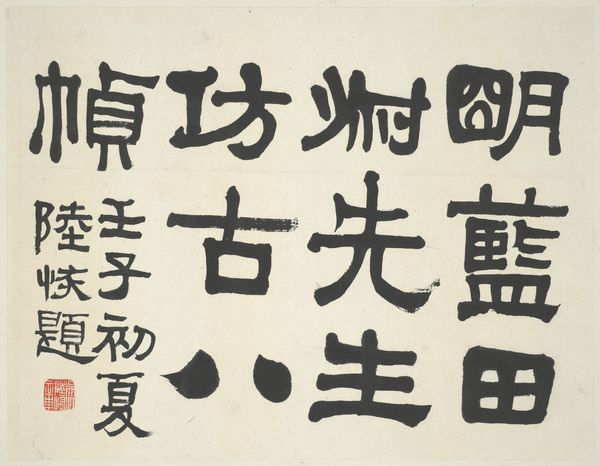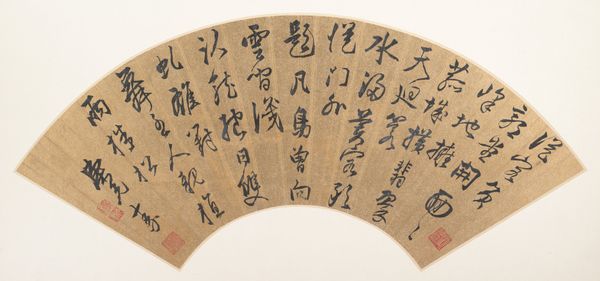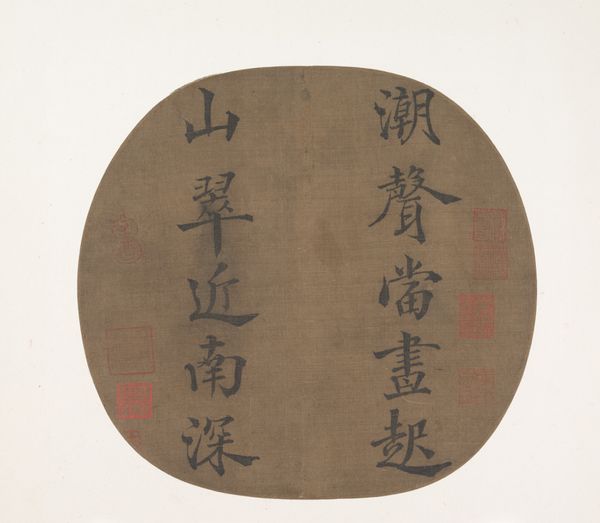
print, textile, paper, typography, woodblock-print
# print
#
textile
#
ukiyo-e
#
paper
#
typography
#
woodblock-print
#
calligraphy
Dimensions: 9 3/16 × 11 1/2 in. (23.3 × 29.2 cm) (image, sheet, uchiwa-e)
Copyright: Public Domain
Curator: This print is a shop sign for Daichinrō, created around 1830 by Yamada Hōgyoku. It’s a woodblock print on paper, residing here at the Minneapolis Institute of Art. Editor: Well, it’s immediately striking in its simplicity and scale. The characters dominate the field, practically jumping out! Curator: Absolutely. Consider the materiality of it all. The textured feel of the paper, the subtle variations in the ink application, these hint at the handcrafted nature of Ukiyo-e prints and the skilled labour involved in the block carving and printing processes. This isn’t just about aesthetic appeal, it’s a commodity made for specific public consumption. Editor: Precisely. A piece of commercial art, signaling Daichinrō’s presence in the bustling urban landscape. The sign utilizes calligraphy, reflecting not just branding but the cultural significance placed upon writing itself. Did these businesses commission specific artists renowned for calligraphy to elevate their public image? Curator: Quite likely. We can infer that Daichinrō considered its public image with great importance, reflected through commissioning visually attractive signs using costly, handmade Ukiyo-e prints that were at the height of popularity at the time. Consider that while paper itself might seem mundane to us, during the Edo period, its production involved many specialized crafts. Editor: So the choice of material signals a level of investment? I suppose what interests me most, also, is where such signs were positioned, within the commercial centers, and how effective these were in attracting passersby. This print, of course, survives beyond its intended historical purpose. Curator: Exactly! It's a survival of culture. Also, let's remember this isn't painting; this is a repeatable commercial enterprise, intended for consumption! How was it disseminated? Editor: It makes you wonder about distribution networks for printed material during the Edo period! It is like a slice of the past made readily accessible to us now. Curator: Indeed! Analyzing pieces like this connects us to aspects of historical life so relevant, such as social standing and economic opportunity, through artistic creation!
